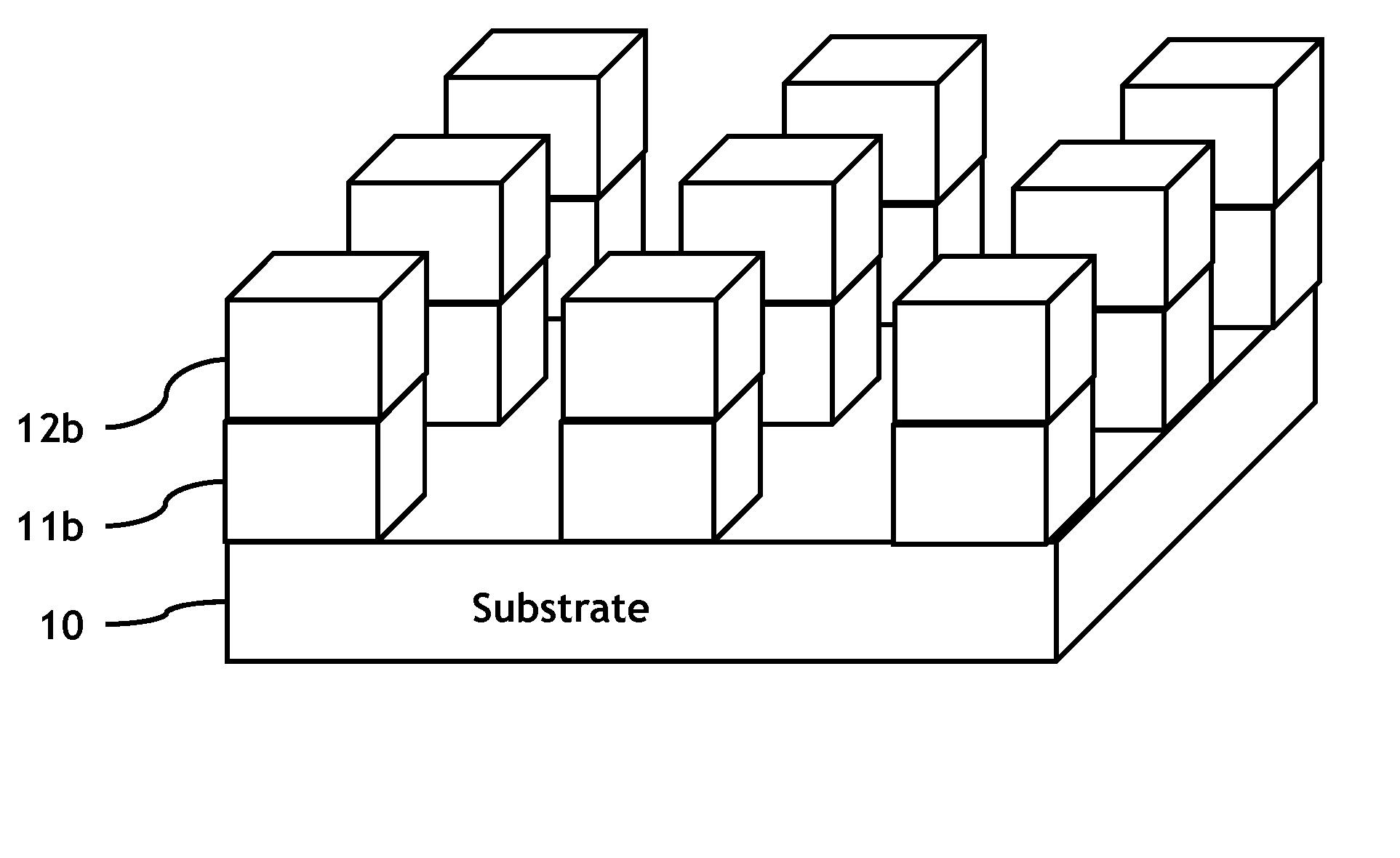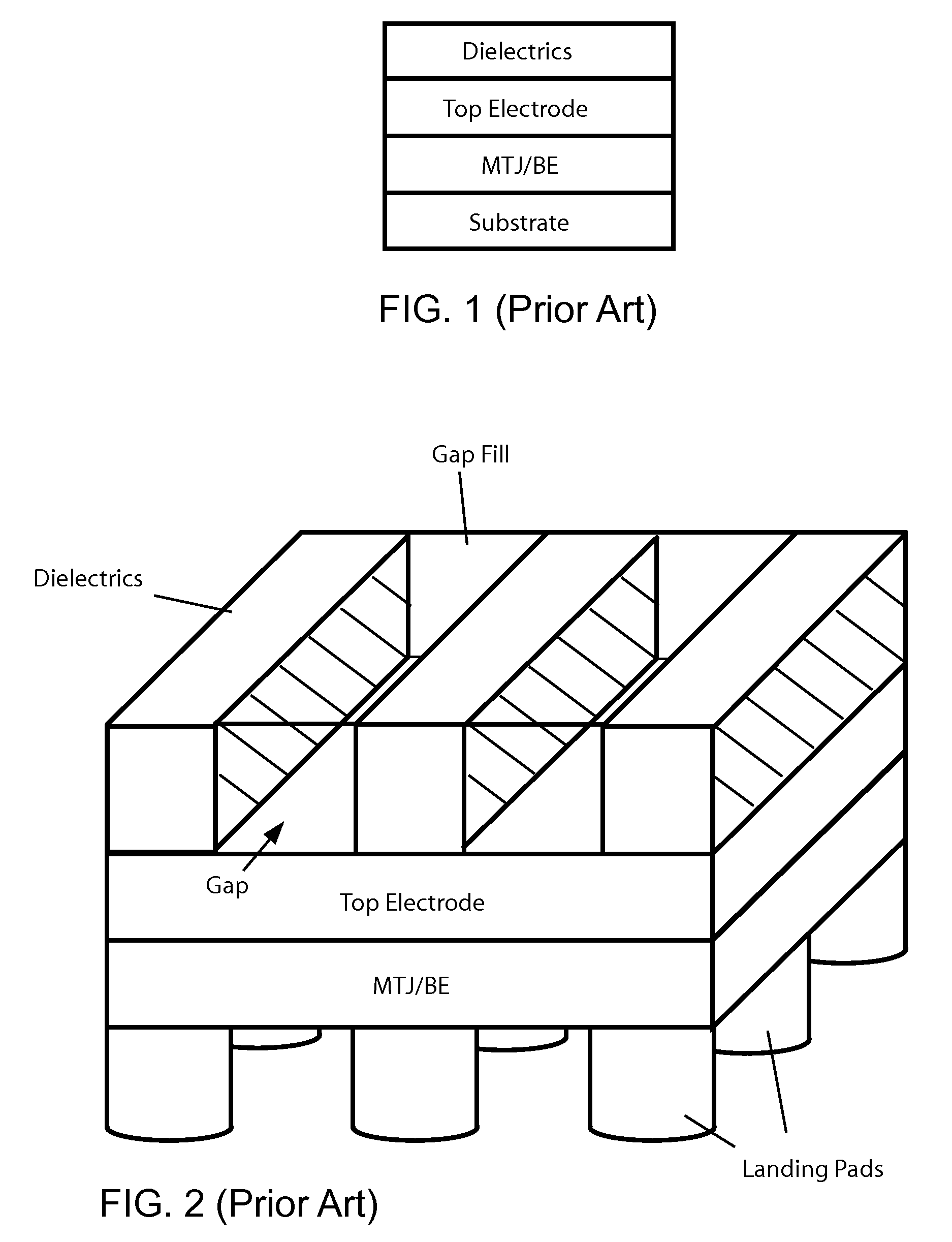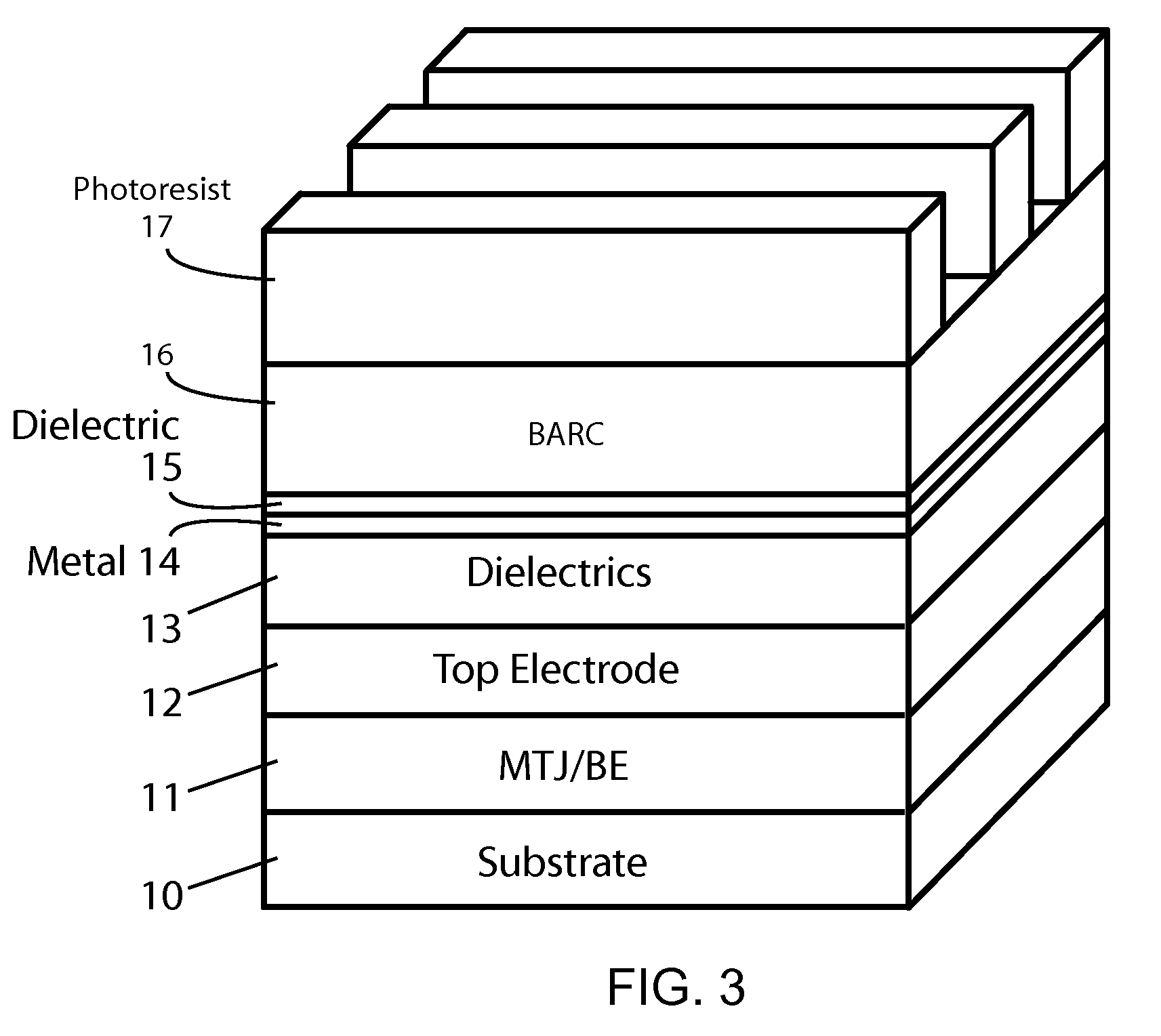Method for manufacturing high density non-volatile magnetic memory
a non-volatile magnetic memory and high density technology, applied in the field of manufacturing memory cells, can solve the problem of reducing the program current required to switch the free layer state, and achieve the effect of reducing the program curren
- Summary
- Abstract
- Description
- Claims
- Application Information
AI Technical Summary
Benefits of technology
Problems solved by technology
Method used
Image
Examples
third embodiment
[0032]Alternatively, in the present invention the self-aligned double patterning (SDP) method can be used to form the second set of parallel mask lines which can then be used create the dielectric square or rectangular shape mask pad, similar to the dielectric square or rectangular shape pad 15c as shown in FIG. 6. By using the SDP method for both orthogonal set of mask lines both dimensions can be width F / 2. Similar steps as depicted in FIG. 7 and FIG. 8 can follow to achieve a very dense array of MTJ pillars similar to those shown in FIG. 9.
fourth embodiment
[0033]In the present invention, a modified stack structure and process flow from the previous embodiments is used. The first set of mask lines is used to pattern the MTJ / BE layers into lines before the top electrode layer is deposited. Referring now to FIG. 11, the film stack structure of a non-volatile magnetic memory has been deposited on a substrate 30 containing CMOS circuitry (not shown) and means for electrical connections to the MTJ elements that will be patterned. The stack structure consists of the MTJ layer group which in turn consists of the magnetic layers and tunnel barrier as described above. On top of the MTJ and bottom electrode stack (MTJ / BE) 31, a hard mask layer 32 and then first (lower) dielectric layer 33 is deposited. In a preferred embodiment, the hard mask layer 32 is made out of tantalum (Ta).
[0034]On top of the dielectric layer 33, a thin metal layer and a thin dielectric layer were deposited and then patterned as described above for the first embodiment to...
PUM
 Login to View More
Login to View More Abstract
Description
Claims
Application Information
 Login to View More
Login to View More - R&D
- Intellectual Property
- Life Sciences
- Materials
- Tech Scout
- Unparalleled Data Quality
- Higher Quality Content
- 60% Fewer Hallucinations
Browse by: Latest US Patents, China's latest patents, Technical Efficacy Thesaurus, Application Domain, Technology Topic, Popular Technical Reports.
© 2025 PatSnap. All rights reserved.Legal|Privacy policy|Modern Slavery Act Transparency Statement|Sitemap|About US| Contact US: help@patsnap.com



